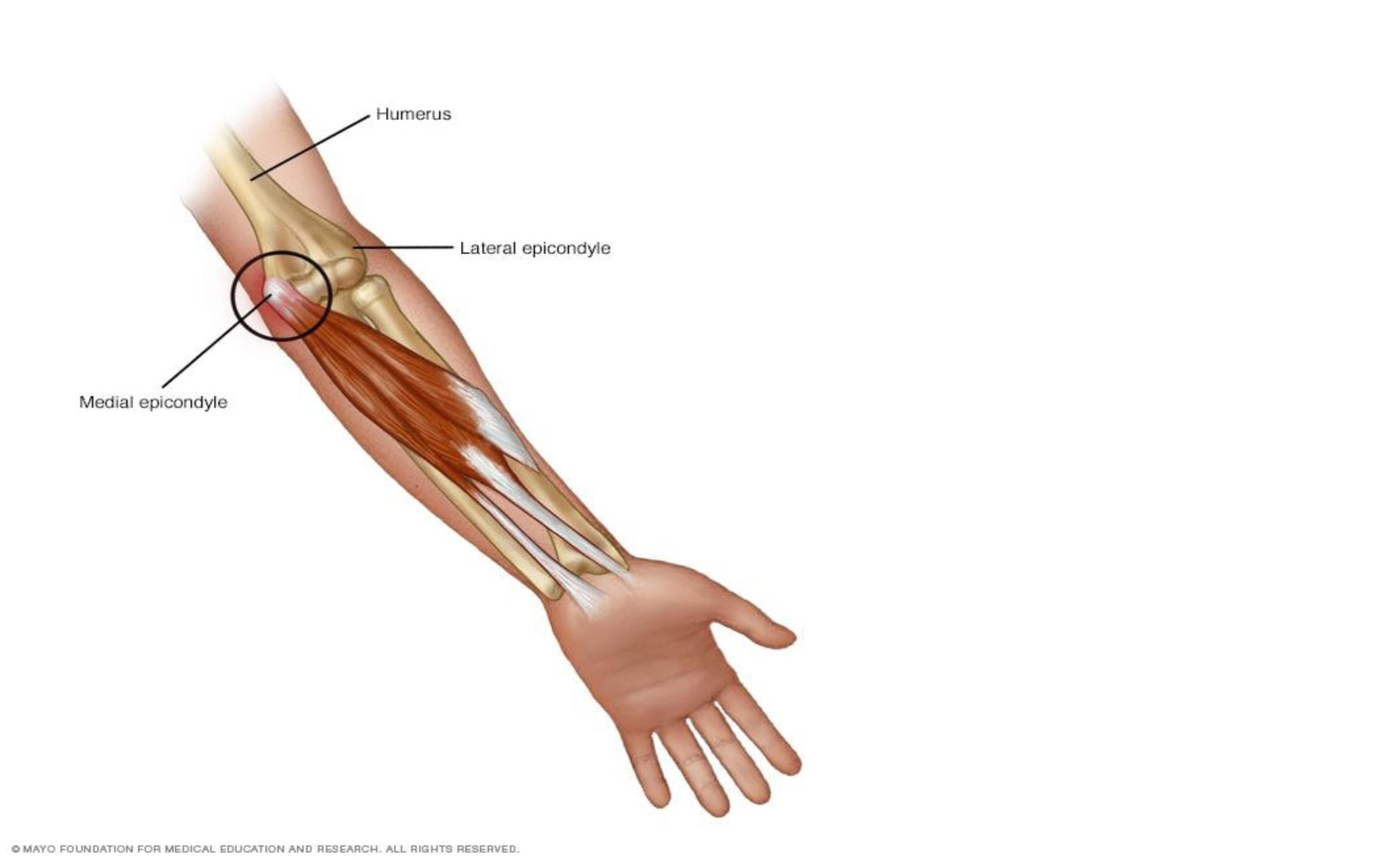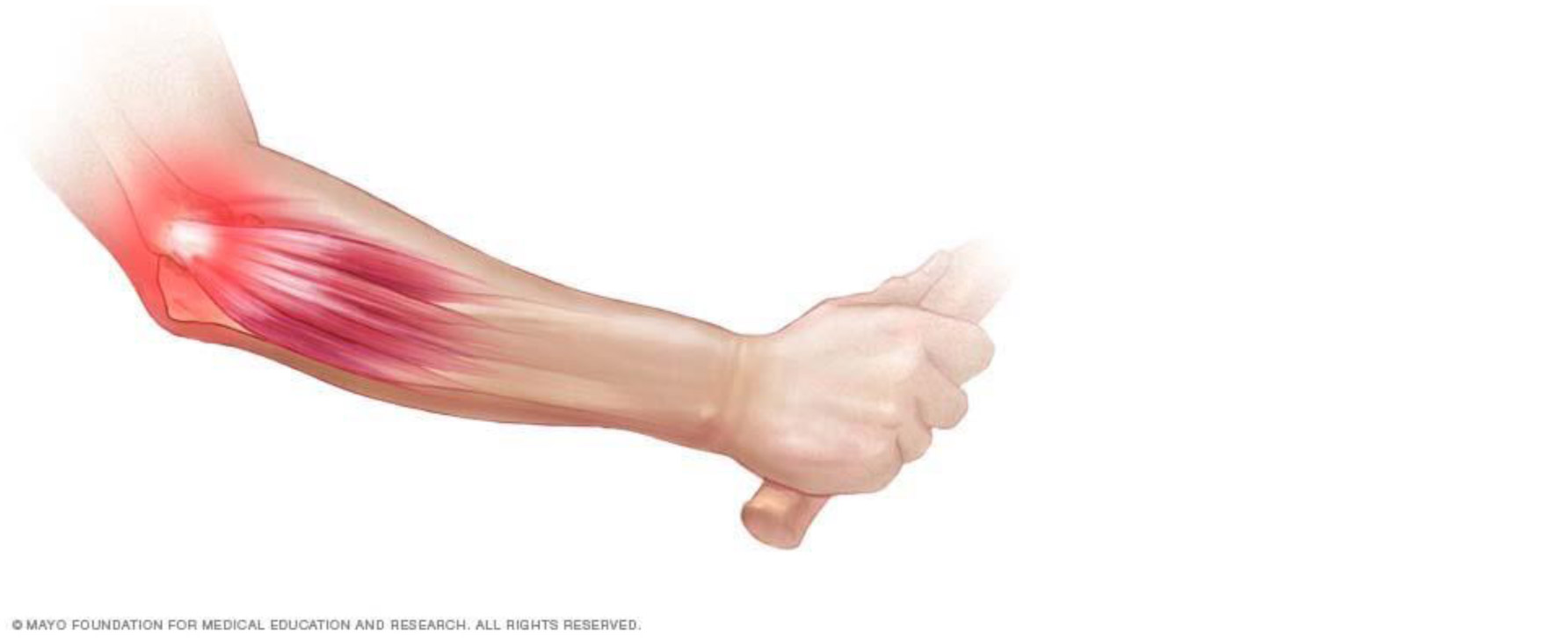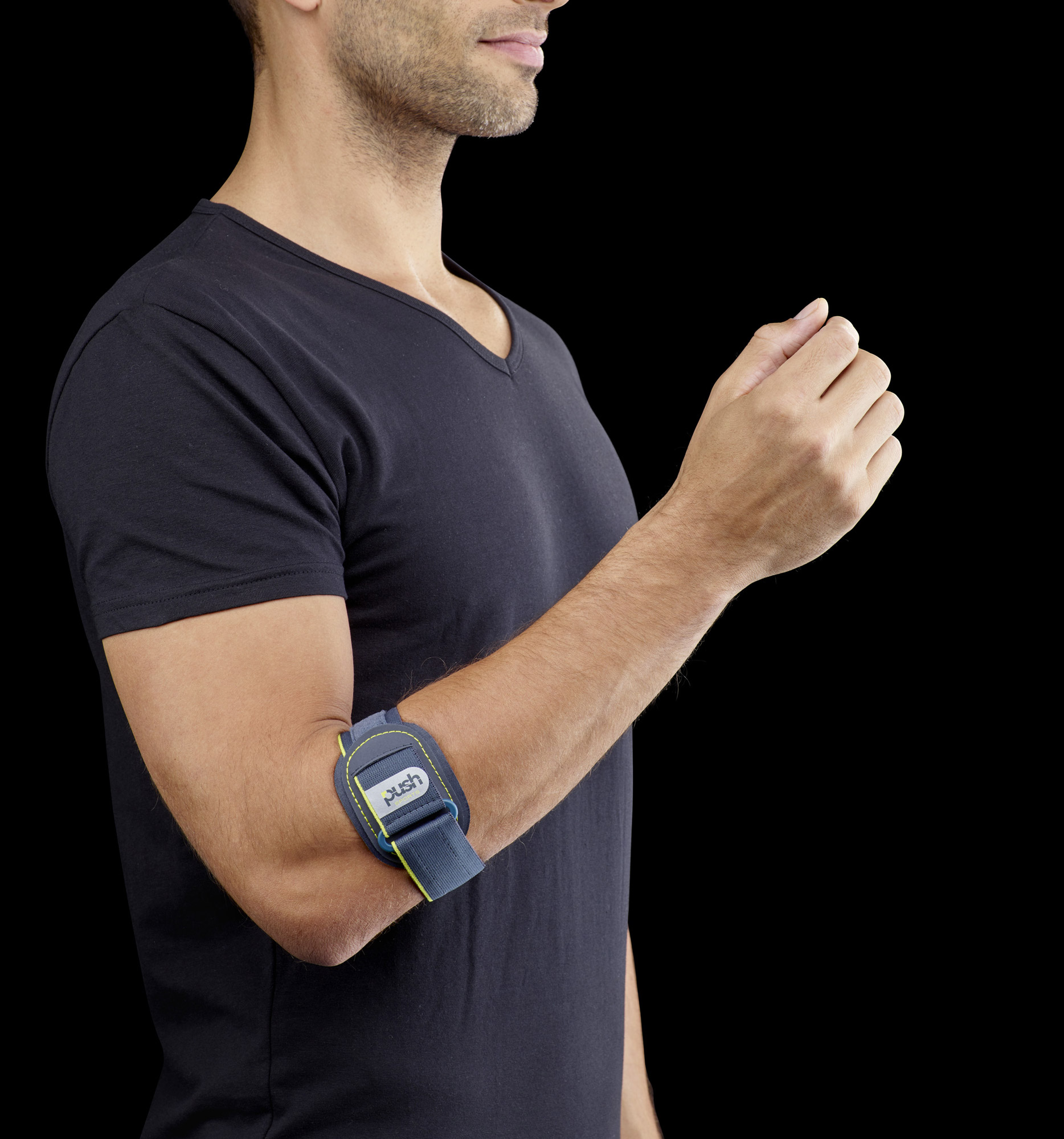An overuse injury around the elbow often occurs following high-frequency repetition of the same movement. This occurs particularly in sports like tennis and golf.
Golfers elbow
Golfer’s elbow is a condition that causes pain where the tendons of your forearm muscles attach to the bony bump on the inside of your elbow. The pain might spread into your forearm and wrist.

Golfer’s elbow is similar to tennis elbow, which occurs on the outside of the elbow. It’s not limited to golfers. Tennis players and others who repeatedly use their wrists or clench their fingers also can develop golfer’s elbow.
Symptoms
Golfer’s elbow is characterized by:
- Pain and tenderness. Usually felt on the inner side of your elbow, the pain
sometimes extends along the inner side of your forearm. Pain typically worsens
with certain movements. - Stiffness. Your elbow may feel stiff, and making a fist might hurt.
- Weakness. You may have weakness in your hands and wrists.
- Numbness or tingling. These sensations might radiate into one or more fingers — usually the ring and little fingers.
The pain of golfer’s elbow (medial epicondylitis) can come on suddenly or gradually. The pain might worsen with certain movements, such as swinging a golf club. Golfer’s elbow is caused by damage to the muscles and tendons that control your wrist and fingers. The damage is typically related to excess or repeated stress — especially forceful wrist and finger motions.
Improper lifting, throwing or hitting, as well as too little warm-up or poor conditioning, also can contribute to golfer’s elbow. To cause golfer’s elbow, the activity generally needs to be done for more than an hour a day on many days.
Besides golf and racket sports such as tennis and padel, many activities and occupations can lead to golfer’s elbow, including:
- Throwing sports. Improper pitching technique in baseball or softball can be another culprit. Football, archery and javelin throwing also can cause golfer’s elbow.
- Weight training. Lifting weights using improper technique, such as curling the wrists during a biceps exercise, can overload the elbow muscles and tendons.
- Forceful, repetitive occupational movements. These occur in fields such as construction, plumbing and carpentry
- Painters
- Grocery store cashiers
- Mechanics
- Those who work at a desk and type and click frequently
Tennis elbow
Tennis elbow (lateral epicondylitis) is a painful condition that occurs when tendons in your elbow are overloaded, usually by repetitive motions of the wrist and arm. Despite its name, athletes aren’t the only people who develop tennis elbow. People whose jobs feature the types of motions that can lead to tennis elbow include plumbers, painters, carpenters and butchers. The pain of tennis elbow occurs primarily where the tendons of your forearm muscles attach to a bony bump on the outside of your elbow. Pain can also spread into your forearm and wrist.


